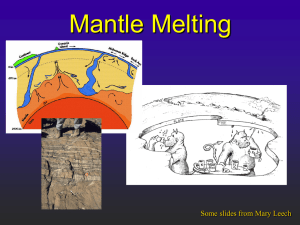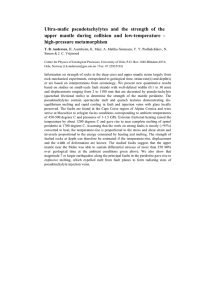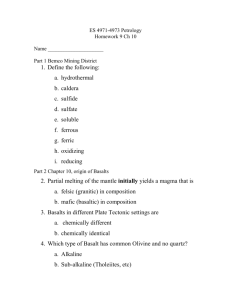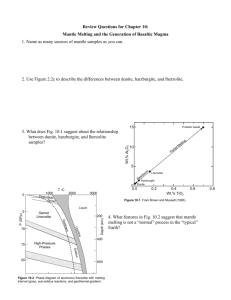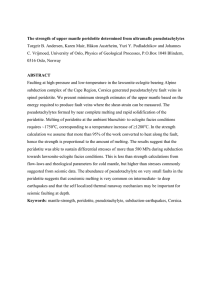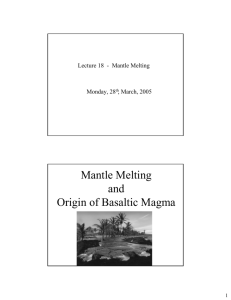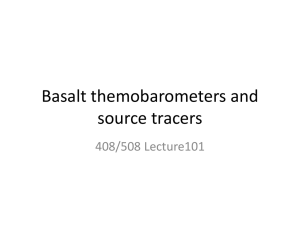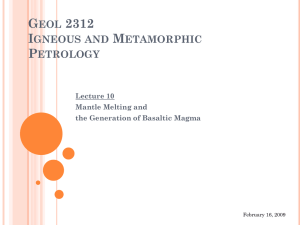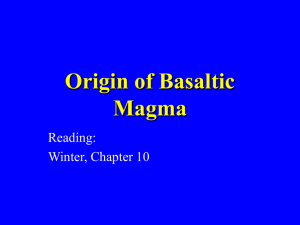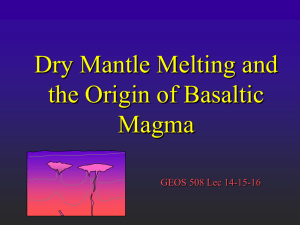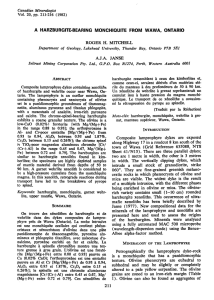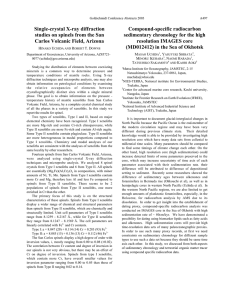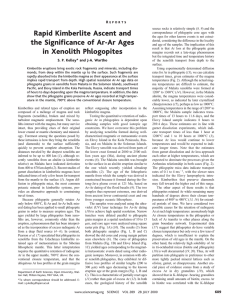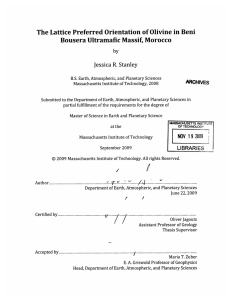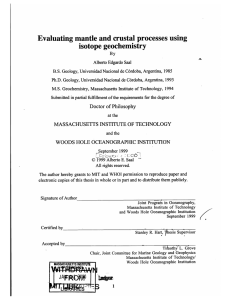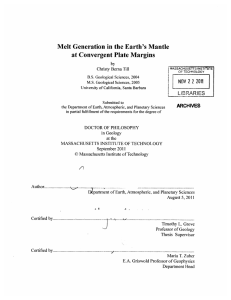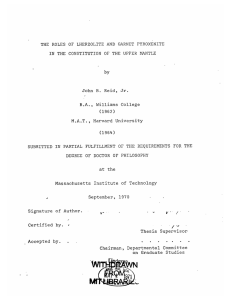Origin of Basaltic Magma
advertisement
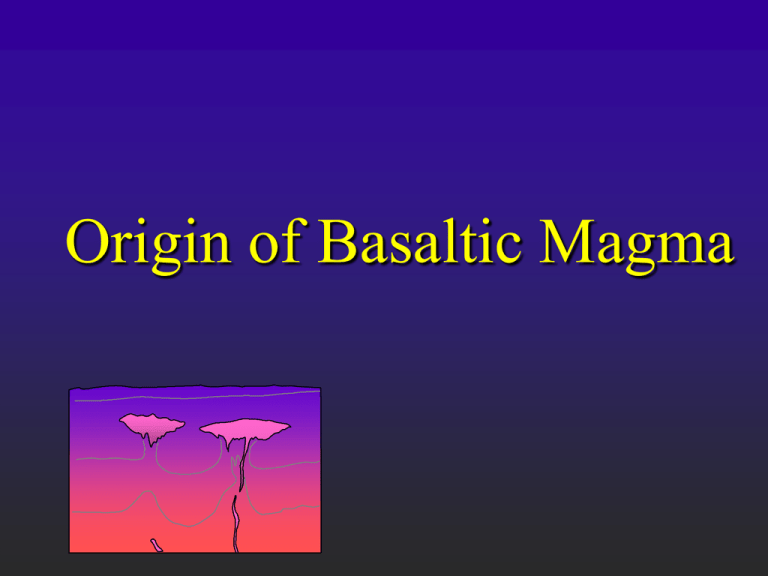
Origin of Basaltic Magma Table 18-4. A Classification of Granitoid Rocks Based on Tectonic Setting. After Pitcher (1983) in K. J. Hsü (ed.), Mountain Building Processes, Academic Press, London; Pitcher (1993), The Nature and Origin of Granite, Blackie, London; and Barbarin (1990) Geol. Journal, 25, 227-238. Winter (2001) An Introduction to Igneous and Metamorphic Petrology. Prentice Hall. Sources of mantle material Ophiolites Slabs of oceanic crust and upper mantle Thrust at subduction zones onto edge of continent Dredge samples from oceanic fracture zones Nodules and xenoliths in some basalts Kimberlite xenoliths Diamond-bearing pipes blasted up from the mantle carrying numerous xenoliths from depth Kimberlite xenoliths Photo of Kimberley diamond min (South Africa) and two examples of mantle xenoliths (peridotite [top] and garnet Peridotite [bottom] from a kimberlite. Lherzolite is probably fertile (undepleted) unaltered mantle Dunite and harzburgite are refractory residuum after basalt has been extracted by partial melting Tholeiitic basalt 15 Ultramafic rocks 10 Figure 10-1 Brown and Mussett, A. E. (1993), The Inaccessible Earth: An Integrated View of Its Structure and Composition. Chapman & Hall/Kluwer. 5 Lherzolite Harzburgite Dunite 0 0.0 0.2 Residuum 0.4 Wt.% TiO2 0.6 0.8 Lherzolite: A type of peridotite with Olivine > Opx + Cpx Olivine Dunite 90 Peridotites Lherzolite 40 Pyroxenites Olivine Websterite Orthopyroxenite 10 10 Orthopyroxene Websterite Clinopyroxenite Figure 2-2 C After IUGS Clinopyroxene Phase diagram for aluminous 4-phase lherzolite: Al-phase = Plagioclase shallow Spinel 50-80 km Garnet 80-400 (< 50 km) km Si VI coord. > 400 km Figure 10-2 Phase diagram of aluminous lherzolite with melting interval (gray), sub-solidus reactions, and geothermal gradient. After Wyllie, P. J. (1981). Geol. Rundsch. 70, 128-153. How does the mantle melt?? 1) Increase the temperature Figure 10-3. Melting by raising the temperature. 2) Lower the pressure Adiabatic rise of mantle with no conductive heat loss Decompression melting could melt at least 30% Figure 10-4. Melting by (adiabatic) pressure reduction. Melting begins when the adiabat crosses the solidus and traverses the shaded melting interval. Dashed lines represent approximate % melting. 3) Add volatiles (especially H2O) Figure 10-4. Dry peridotite solidus compared to several experiments on H2O-saturated peridotites. Melts can be created under realistic circumstances Plates separate and mantle rises at midocean ridges, or at continental rifts Adibatic rise decompression melting Hot spots localized plumes of melt Fluid fluxing Important in subduction zones Figure 9-8. (a) after Pearce and Cann (1973), Earth Planet, Sci. Lett., 19, 290-300. (b) after Pearce (1982) in Thorpe (ed.), Andesites: Orogenic andesites and related rocks. Wiley. Chichester. pp. 525-548, Coish et al. (1986), Amer. J. Sci., 286, 1-28. (c) after Mullen (1983), Earth Planet. Sci. Lett., 62, 53-62.
